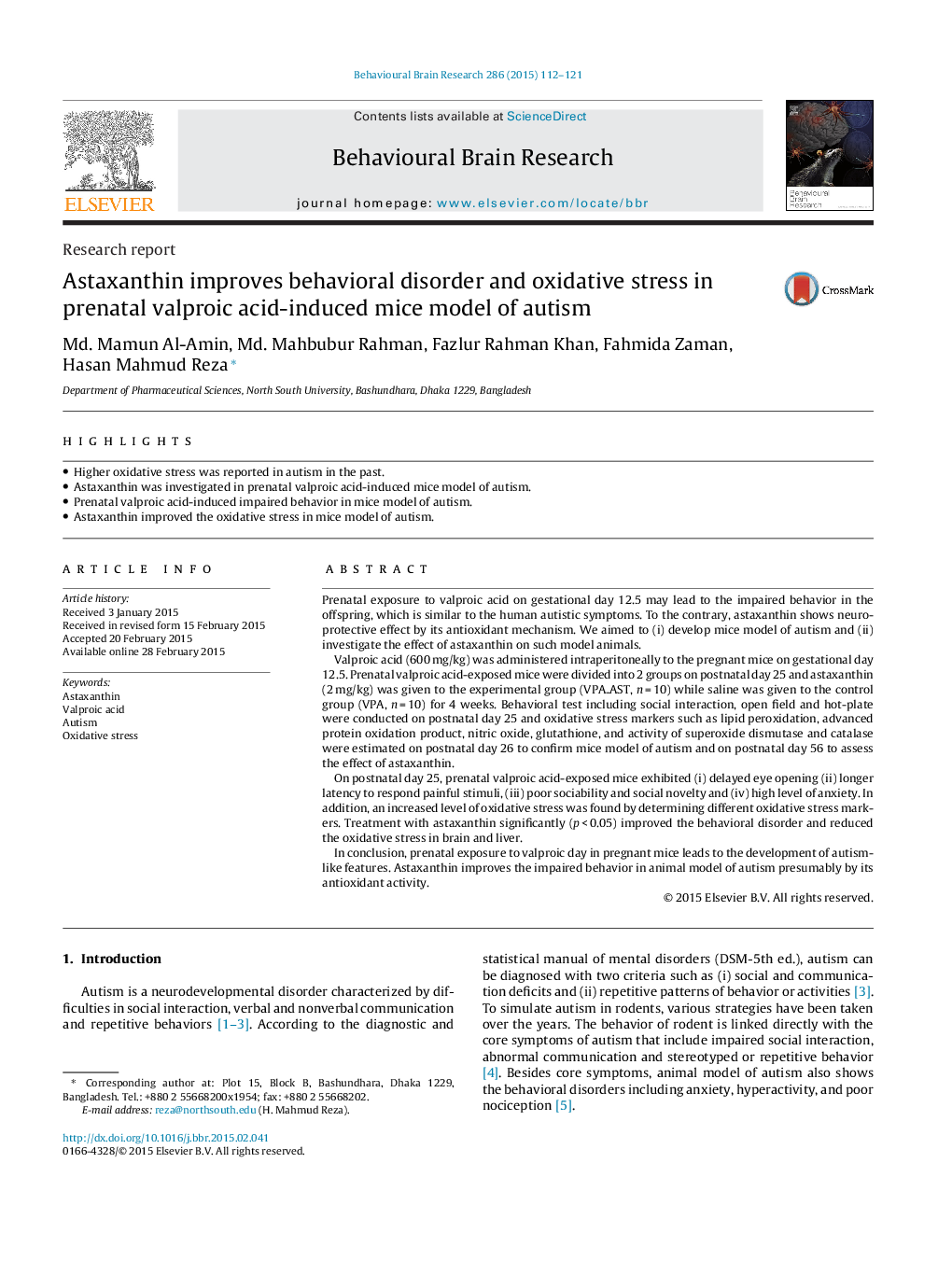| Article ID | Journal | Published Year | Pages | File Type |
|---|---|---|---|---|
| 6257103 | Behavioural Brain Research | 2015 | 10 Pages |
â¢Higher oxidative stress was reported in autism in the past.â¢Astaxanthin was investigated in prenatal valproic acid-induced mice model of autism.â¢Prenatal valproic acid-induced impaired behavior in mice model of autism.â¢Astaxanthin improved the oxidative stress in mice model of autism.
Prenatal exposure to valproic acid on gestational day 12.5 may lead to the impaired behavior in the offspring, which is similar to the human autistic symptoms. To the contrary, astaxanthin shows neuroprotective effect by its antioxidant mechanism. We aimed to (i) develop mice model of autism and (ii) investigate the effect of astaxanthin on such model animals.Valproic acid (600 mg/kg) was administered intraperitoneally to the pregnant mice on gestational day 12.5. Prenatal valproic acid-exposed mice were divided into 2 groups on postnatal day 25 and astaxanthin (2 mg/kg) was given to the experimental group (VPA_AST, n = 10) while saline was given to the control group (VPA, n = 10) for 4 weeks. Behavioral test including social interaction, open field and hot-plate were conducted on postnatal day 25 and oxidative stress markers such as lipid peroxidation, advanced protein oxidation product, nitric oxide, glutathione, and activity of superoxide dismutase and catalase were estimated on postnatal day 26 to confirm mice model of autism and on postnatal day 56 to assess the effect of astaxanthin.On postnatal day 25, prenatal valproic acid-exposed mice exhibited (i) delayed eye opening (ii) longer latency to respond painful stimuli, (iii) poor sociability and social novelty and (iv) high level of anxiety. In addition, an increased level of oxidative stress was found by determining different oxidative stress markers. Treatment with astaxanthin significantly (p < 0.05) improved the behavioral disorder and reduced the oxidative stress in brain and liver.In conclusion, prenatal exposure to valproic day in pregnant mice leads to the development of autism-like features. Astaxanthin improves the impaired behavior in animal model of autism presumably by its antioxidant activity.
